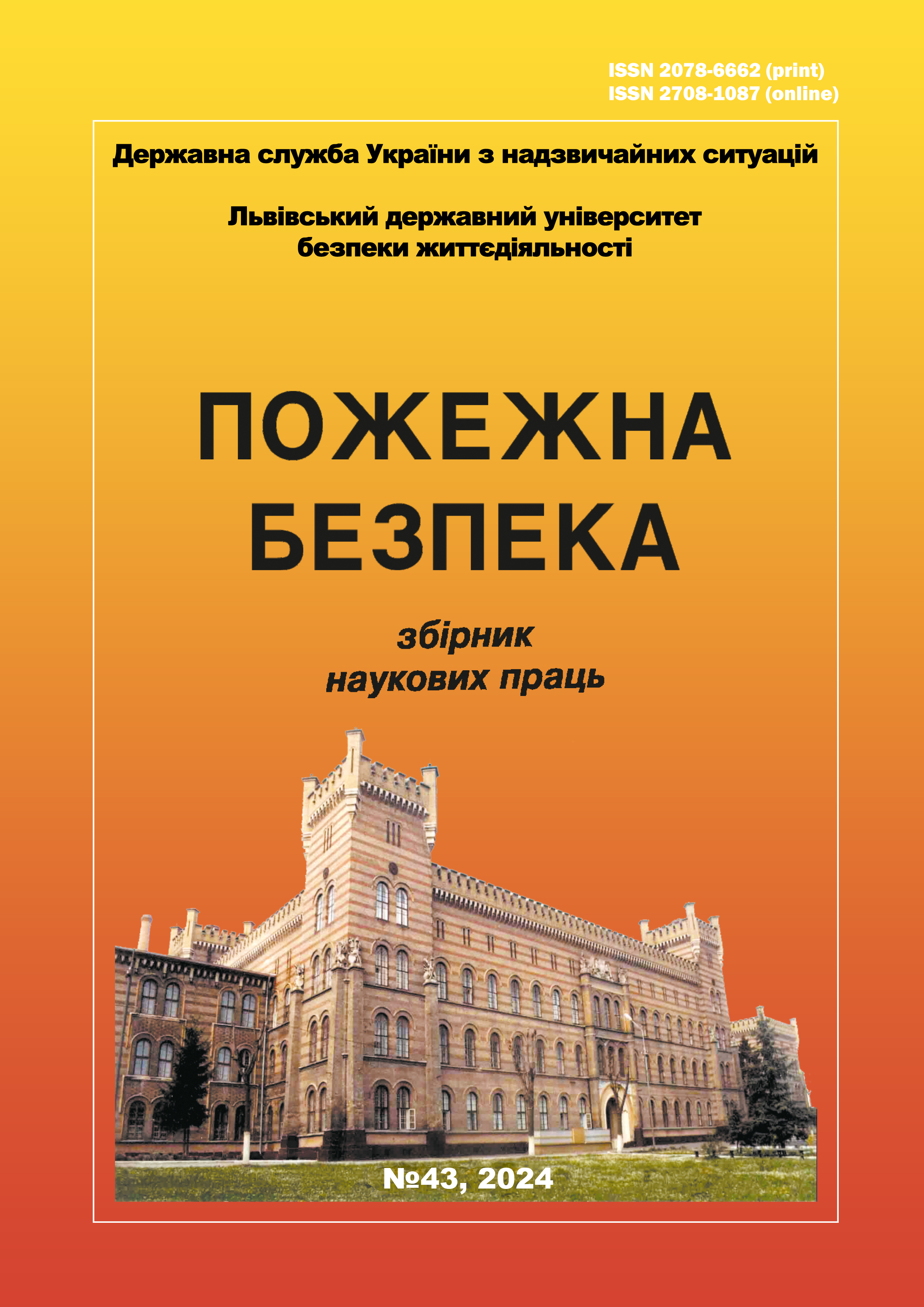АНАЛІЗ МОЖЛИВОСТЕЙ ПІДВИЩЕННЯ ПРОТИПОЖЕЖНОГО ЗАХИСТУ АВІАЦІЙНИХ АНГАРІВ ШЛЯХОМ ВДОСКОНАЛЕННЯ ВИСОКОТЕХНОЛОГІЧНИХ СИСТЕМ ВИЯВЛЕННЯ ПОЖЕЖІ
Анотація
Проблема. Швидке виявлення загорання у разі пожежі та її гасіння має вирішальне значення для захисту авіаційних ангарів. Економічні втрати від пожежі можуть бути на мільярди доларів. Літак внаслідок пожежі може отримати пошкодження менш, ніж за хвилину від початку пожежі. Тому час виявлення пожежі є критичним параметром в системі забезпечення протипожежного захисту ангарів. Крім того є безліч можливих факторів, які можуть спричинити помилкове спрацювання системи і, тим самим, спричинити помилкову активацію системи пожежогасіння. Тому не зважаючи на неймовірний розвиток сучасних технологій і усе різноманіття систем виявлення пожеж – забезпечення пожежної безпеки авіаційних ангарів є актуальною задачею.
Мета дослідження. Метою роботи є аналіз можливостей підвищення протипожежного захисту авіаційних ангарів шляхом вдосконалення технологічних систем виявлення пожежі, а саме, використанням інтелектуальних пожежних сповіщувачів полум’я та відеосистем виявлення пожежі.
Методи дослідження. Для досягнення поставленої мети та задач дослідження було використано теоретичні методи дослідження, що передбачало аналіз наукових публікацій та чинної нормативної бази за напрямком дослідження.
Основні результати дослідження. Точкові теплові і димові пожежні сповіщувачі не використовуються для захисту авіаційних ангарів. Великі відкриті зони з великою висотою не дають змоги їм виявити загорання на ранній стадії. Висота літаків та стратифікація також можуть перешкоджати використанню лінійних димових пожежних сповіщувачів. Для захисту як цивільних, так і військових ангарів використовуються пожежні сповіщувачі полум’я. Проведені дослідження доводять, що пожежні сповіщувачі полум’я з трьома інфрачервоними сенсорами забезпечують найкращий результат розпізнавання пожежі в широкому діапазоні проведених тестових сценаріїв пожеж.
І хоча багатоспектральні ІЧ ПС полум’я мають багато переваг, вони мають і певні ключові недоліки, головним чином пов’язані з помилковими спрацюваннями від джерел завад, не пов’язаних з реальною пожежею. Вони можуть спрацьовувати через гаряче CO2 у повітрі, випромінювання чорного тіла від літаків або службових транспортних засобів, електромагнітне випромінювання тощо Щоб мінімізувати кількість помилкових спрацювань системи
необхідно використати нові технологічні рішення. Одними із таких рішень є використання високоінтелектуальних пожежних сповіщувачів полум’я та пожежних відеосповіщувачів. Проведені дослідження для захисту інших об’єктів показали, що пожежні відеосповіщувачі виявляли пожежу майже в кожному випробуванні порівняно із іншими типами пожежних сповіщувачів і помилковість спрацювання від додаткових джерел завад була мінімальною.
Висновки. Згідно з проведеними дослідженнями та стандартами для захисту як цивільних, так і військових ангарів, в системах пожежної сигналізації необхідно використовувати оптичні триспектральні інфрачервоні пожежні сповіщувачі полум’я. Ризики, пов’язані з використання традиційних оптичних пожежних сповіщувачі полум’я, демонструють потребу в розробці більш ефективних системи виявлення пожежі з меншим ризиком помилкового спрацювання. Одним із перспективних способів підвищення надійності та зменшення часу виявлення загорання є використання високоінтелектуальних пожежних сповіщувачів полум’я побудованих на основі нечіткої логіки, нейронної мережі та нечіткої нейронної мережі. Іншим перспективним напрямком для раннього виявлення загорянь є використання пожежних відеосповіщувачів. Використання пожежних відеосповіщувачів є чудовою альтернативою традиційній системі пожежної сигналізації з пожежними сповіщувачами. Однак для забезпечення ефективного захисту авіаційних ангарів та літаків за допомогою пожежних відеосповіщувачів необхідно провести додаткові дослідження, які дадуть відповіді на питання про швидкість виявлення загорання, ймовірність помилкових спрацювань від різних джерел завад, а також місця їх встановлення. Слід відмітити ще одну проблему використання пожежних відеосповіщувачів, а саме: відсутність в повні мірі необхідної нормативної документації. Міжнародні стандарти не дають відповіді на усі запитання щодо їх проектування і використання.
Завантаження

Ця робота ліцензована відповідно доCreative Commons Attribution 4.0 Міжнародної ліцензії.
Авторські права CC-BY








